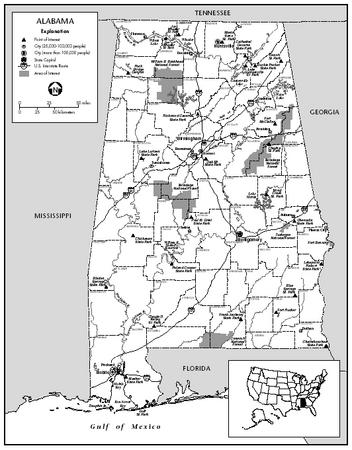Alabama
Ethnic groups
Alabama's population is largely divided between whites of English and Scotch-Irish descent, and blacks descended from African slaves. The 2000 census counted about 22,430 Indians (up from 17,000 in 1990), or 0.5% of the total population, mostly of Creek or Cherokee descent. Creek Indians are centered around the small community of Poarch in southern Alabama; most of the Cherokee live in the northeastern part of the state, where the Cherokee reservation had 12,294 residents as of 2000.
The black population of Alabama in 2000 numbered 1,155,930, or about 26% of the total population. As before the Civil War, rural blacks are most heavily represented in the Black Belt of central Alabama.
In 2000, the Asian population totaled 31,346, or less than 1% of the total, and Pacific Islanders numbered 1,409; in the same year, the population of Hispanic or Latino descent totaled 75,830, up from 43,000 in 1990, an increase from 1% to 1.7% of the total population within the decade. In 2000, Alabama had

Alabama's Cajuns, of uncertain racial origin (Anglo-Saxon, French, Spanish, Choctaw, Apache, and African elements may all be represented), are ethnically unrelated to the Cajuns of Louisiana. Thought to number around 10,000, they live primarily in the pine woods area of upper Mobile and lower Washington counties. Many Alabama Cajuns suffer from poverty, poor health, and malnutrition.